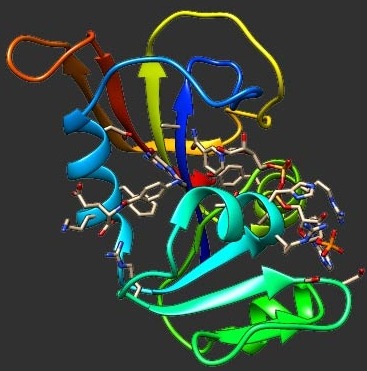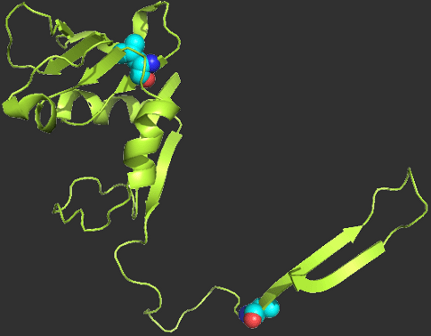Citation:
Date Published:
7 June 2016Abstract:
Domain swapping in proteins is an important mechanism of functional and structural innovation. However, despite its ubiquity and importance, the physical mechanisms that lead to domain swapping are poorly understood. Here, we present a simple two-dimensional coarse-grained model of protein domain swapping in the cytoplasm. In our model, two-domain proteins partially unfold and diffuse in continuous space. Monte Carlo multiprotein simulations of the model reveal that domain swapping occurs at intermediate temperatures, whereas folded dimers and folded monomers prevail at low temperatures, and partially unfolded monomers predominate at high temperatures. We use a simplified amino acid alphabet consisting of four residue types, and find that the oligomeric state at a given temperature depends on the sequence of the protein. We also show that hinge strain between domains can promote domain swapping, consistent with experimental observations for real proteins. Domain swapping depends nonmonotonically on the protein concentration, with domain-swapped dimers occurring at intermediate concentrations and nonspecific interactions between partially unfolded proteins occurring at high concentrations. For folded proteins, we recover the result obtained in three-dimensional lattice simulations, i.e., that functional dimerization is most prevalent at intermediate temperatures and nonspecific interactions increase at low temperatures.

